Deji Ogeyingbo writes about his deep, deep thoughts from the 2022 Diamond League. Thirteen meets, so many great moments, and now Deji has put down his Five Talking Points!
Five Talking points from the Diamond League season
The final Diamond League meeting in the Swiss city of Zurich brought about many thrills, frills, breathtaking athletics, and lots of records falling. Thirty-two athletes were crowned with the prestigious trophy and also carted home $30,000.
The two-day programme also saw world leads for Jakob Ingebrigtsen and Marileidy Paulino and meeting records for Mondo Duplantis, Shelly-Ann Fraser-Pryce and Tobi Amusan.
But over the five-month period and 13 meetings in different cities, what are some of the lessons we learnt over the period and what changes need to be made going into next season?
Tobi Amusan beats Jasmine Camacho-Quinn when it mattered most
World Champion and Record holder over the women’s 100m hurdles, Tobi Amusan and Olympic Champion Jasmine Camacho-Quinn have been on each other’s necks since their collegiate days. The first time they met was in 2016 when they locked horns in the final of the NCAA Championships with Camacho-Quinn coming out on top. They were both teenagers, little did we know it was going to be the start of one of athletic biggest rivalries.
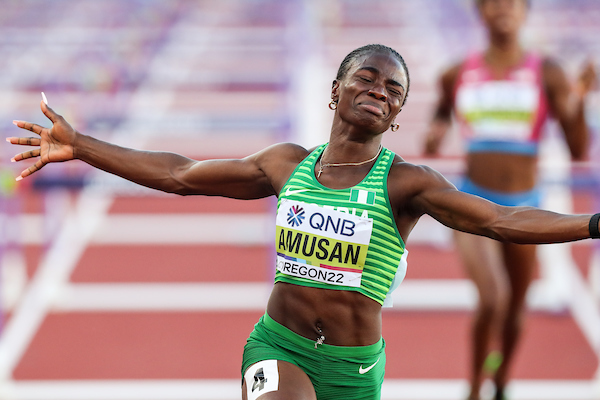
Eugene, Oregon, USA
July15-26, 2022, photo by Kevin Morris
13 meetings later, both sprint-hurdlers are still at it with the Puerto Rican edging it 8-6. However, in the last eight years, 2022 was the year they faced each other the most with four of them coming in the Diamond League circuit.
Their first two meetings in Eugene and Stockholm saw Camacho-Quinn trump the Nigerian. A couple of weeks afterwards, Amusan reached her peak as she broke the world record in Oregon while also pipping her rival to Gold in track town. It seemed to shatter the confidence of Camacho-Quinn as many felt she was the best bet to lower the world record after her feat at the Olympics in Tokyo in 2021.
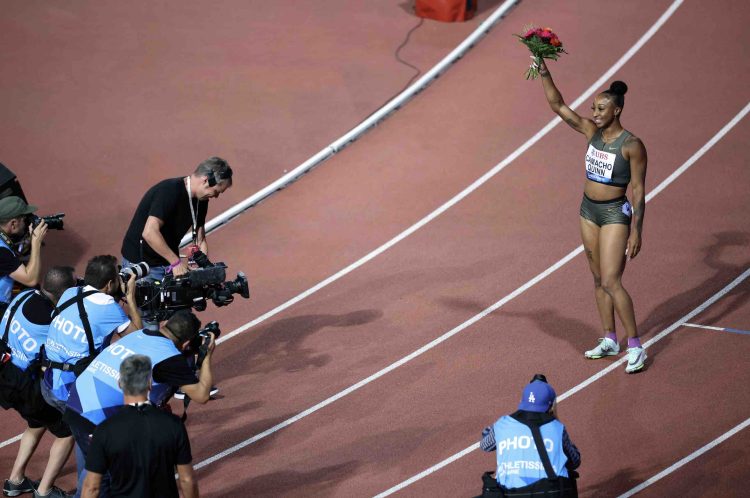
Camacho-Quinn picked up the pieces, got her confidence back, and won the Diamond League races in Lausanne and Brussels, beating Amusan in the former. It made their latest meeting in Zurich all the more interesting.

And when it mattered most again, Amusan ran a blistering 12.29s to take down Gail Devers’ 20-year record and defend her Diamond Trophy while Camacho-Quinn had to settle for fourth. She didn’t seem in her pump as he raced side by side with Amusan, but it didn’t matter. The Nigerian has found a way to beat her at crucial moments and their race in Zurich proved that.
Shelly-Ann Fraser-Pryce establishes greatness with the fourth Diamond League Trophy
For all the talk about how athletics is tilting towards the younger generation winning more laurels than their older counterparts, it is a 35-year-Old who still continues to dominate the women’s 100m.
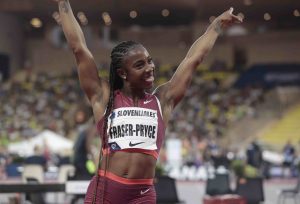
Not that we didn’t know already, but Shelly-Ann Fraser-Pryce’s win in Zurich once again re-affirms the prowess of this great Jamaican. Her journey to all-time greatness which started with her first Olympic title in 2008 continues to grow and her latest exploit in Zurich saw her claim her fifth Diamond League title-claimed in the 100m in 2012, 2013 and 2015, and one in the 200m from 2013, is just a pointer to how lucky we are to watch her.
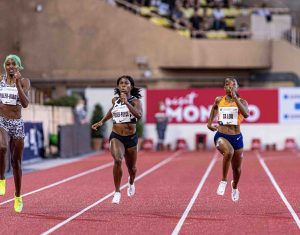
It was a flawless season for the multiple worlds and Olympics champion as she racked up wins with reckless abandon. Her numbers were more sterling. Fraser Pryce became the first athlete to run sub-10.70 on seven occasions in the same season.
How can one woman be this dominant? Her only defeat this year came in the penultimate race in Brussels where a toe injury she suffered in Lausanne seemed to have hindered her from going full throttle. Still, she finished second and ran 10.74s.
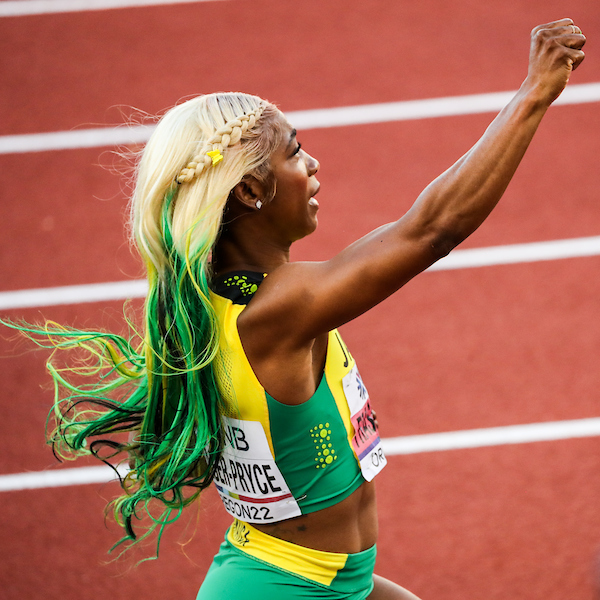
Eugene, Oregon, USA
July 15-24, 2022, photo by Kevin Morris
Where does she go from here is the question on many people’s lips. Knowing when to call it quits can be a difficult tell for an athlete. For one as great as Fraser-Pryce, it gets all the more daunting. For now, let’s continue to savour the greatness of this Jamaican.
Street Athletics needs to be inculcated a lot more
The first part of the Diamond League final took place in a temporary arena in the centre of Zurich, right in front of the Zurich Opera House. Spectators sat in two temporary stands or stood on the Opera House grounds or on the Opera House steps for a better view. It felt street-like. Kind of like what we see in 3×3 Basketball.
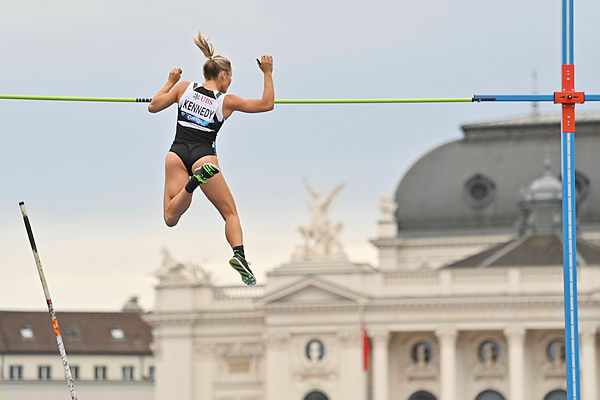
As kids, most of these athletes didn’t get to horn their talents inside a magnificent stadium. Most did in improvised small settings, almost street-like. And a couple of meets during the Diamond League season inculcated that. It felt natural and pure.
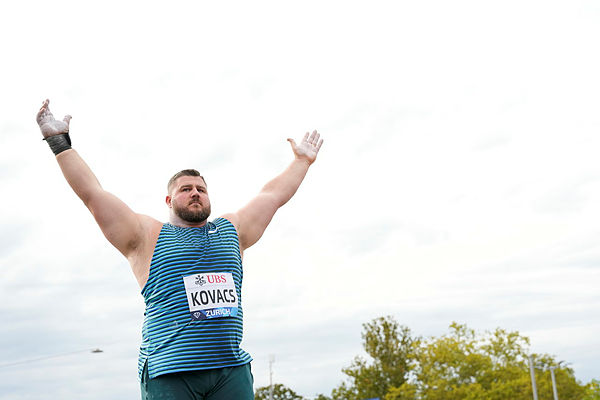
Most times, the field events get a lot of coverage as it is much easier to organize. Also, environmental factor like the wind doesn’t have much influence on the entire results. The fans seem to love it. Spicing things up has brought a different dimension to how the global audience views athletics.
Noah Lyle’s achievements go under the radar
At what point does a sprinter begin to etch his/her name into athletics immortality? Granted it’s a phrase that gets brandished easily these days but in reality, a lot of it boils down to the achievement of the athlete. In this case, Noah Lyles is the case study.
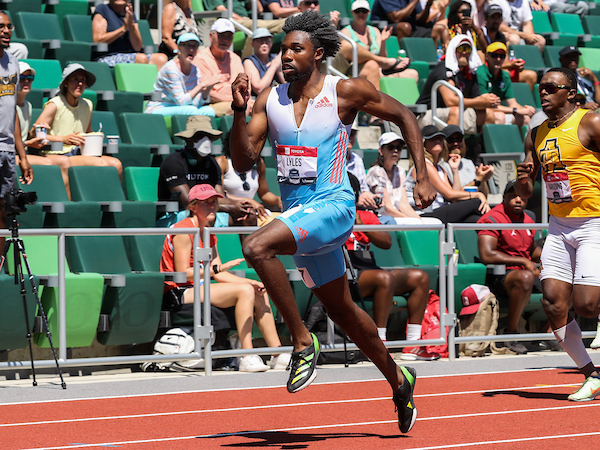
Throughout the Diamond League season, the American has been unstoppable over the 200m. At the final in Zurich, Lyles crossed the line in 19.52, an incredible half a second clear of his opponents, and broke Usain Bolt’s meeting record of 19.66 from 10 years ago.
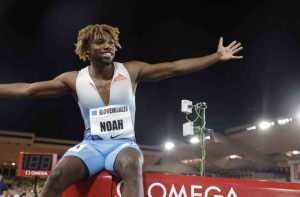
His speed, determination and consistency are worthy enough to call him one of the greatest sprinters of all time. At age 25, Lyles has won the world title twice, clinched four Diamond League trophies and has become the third-fastest man in history over the 200m.

Lyle’s numbers are just sheer impeccable. Of his twelve 200m races this season, the American won all of them including Diamond League wins in Doha, Monaco and Lausanne. Older and younger athletes have all had a go at usurping him but he still stands strong.
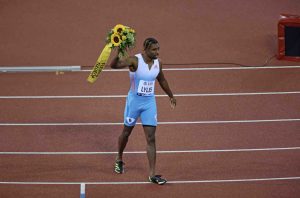
Certainly, there is still more to come from the American. 2024 is an Olympic year, and it will surely go down as one that should streak him clear of his competition, especially if he finally wins it. But for now, we need to talk about him in the same breath as some of the all-time greats.
What a season it has been for Werkuha Getachew
Ethiopia is a great athletics nation. Over the years their athletes have won laurels over the middle and long distances, jostling it out with their great East African rivals Kenya. In all of their dominance, they seemed not to have been able to produce a truly global star of the women’s 3000m Steeplechase.
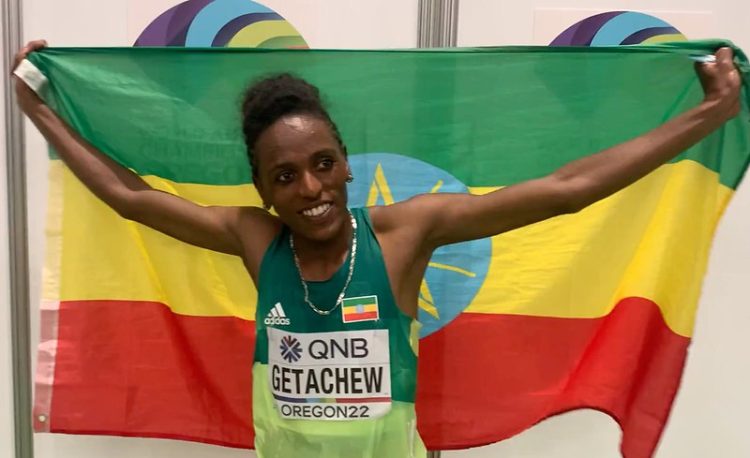
Not anymore. Werkuha Getachew lived up to the promise a lot of her country people had on her. From Mauritius when she won the African title, Getachew, national record-holder in both the 800m and 3000m steeplechase, used her two-lap speed to significant effect in the final in Zurich as she clocked 9:03.57 to win by almost a second ahead of Wilfred Yavi.
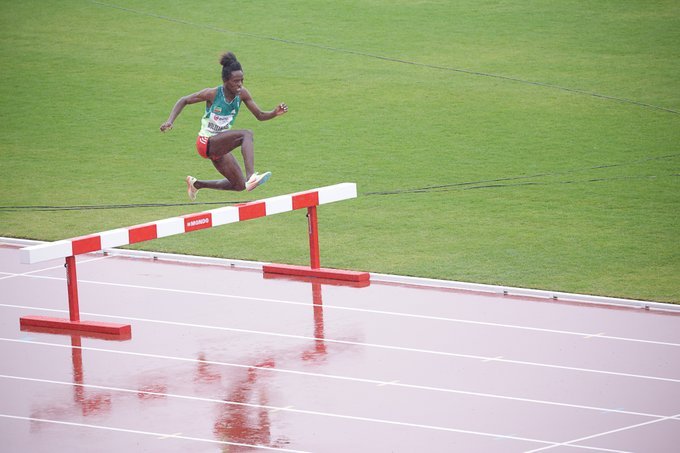
Still raw and with many more races for her in the tank, there is a huge possibility that Getachew will get better. In fact, it was in the Diamond League meet in Brussels in which she was tipped to break Beatrice Chepkoech’s record from 2018. Although it didn’t materialize, the Ethiopian will look back at this season and use it as a springboard to do bigger things in the steeplechase going into next season.
Author

Deji Ogeyingbo is one of Nigeria’s leading Track and Field Journalists as he has worked in various capacities as a writer, content creator, and reporter for radio and TV stations in the country and Africa. Deji has covered varying degrees of Sporting competitions within and outside Nigeria which includes, African Championships and World Junior Championships. Also, he founded one of Nigeria’s leading Sports PR and Branding company in Nikau Sports in 2020, a company that aims to change the narrative of how athletes are perceived in Nigeria while looking to grow their image to the highest possible level.
View all posts






















